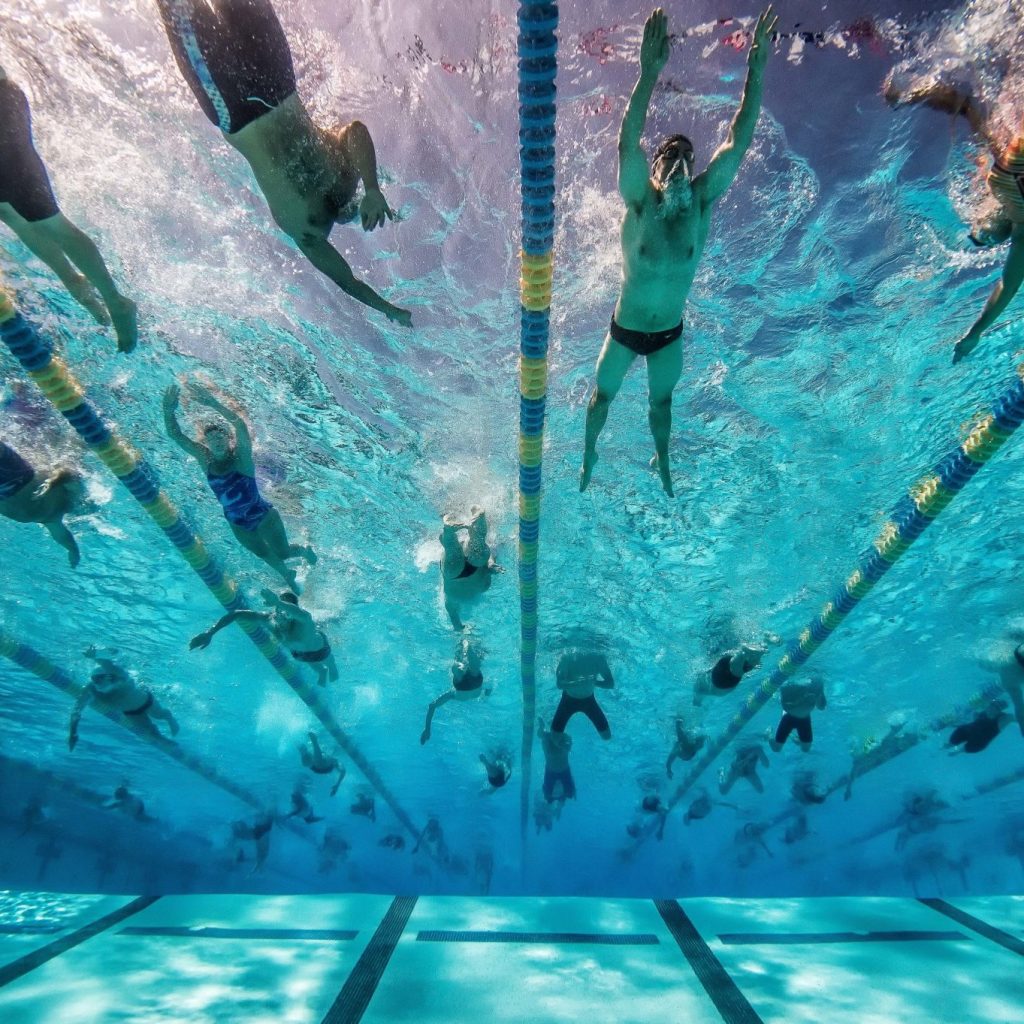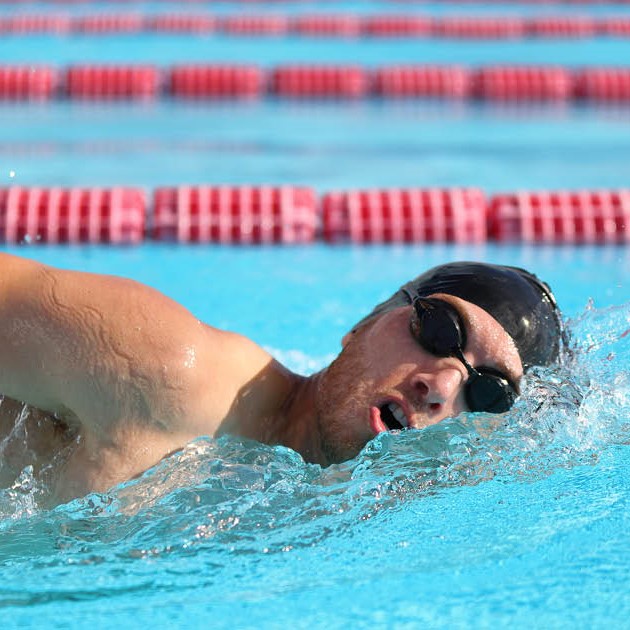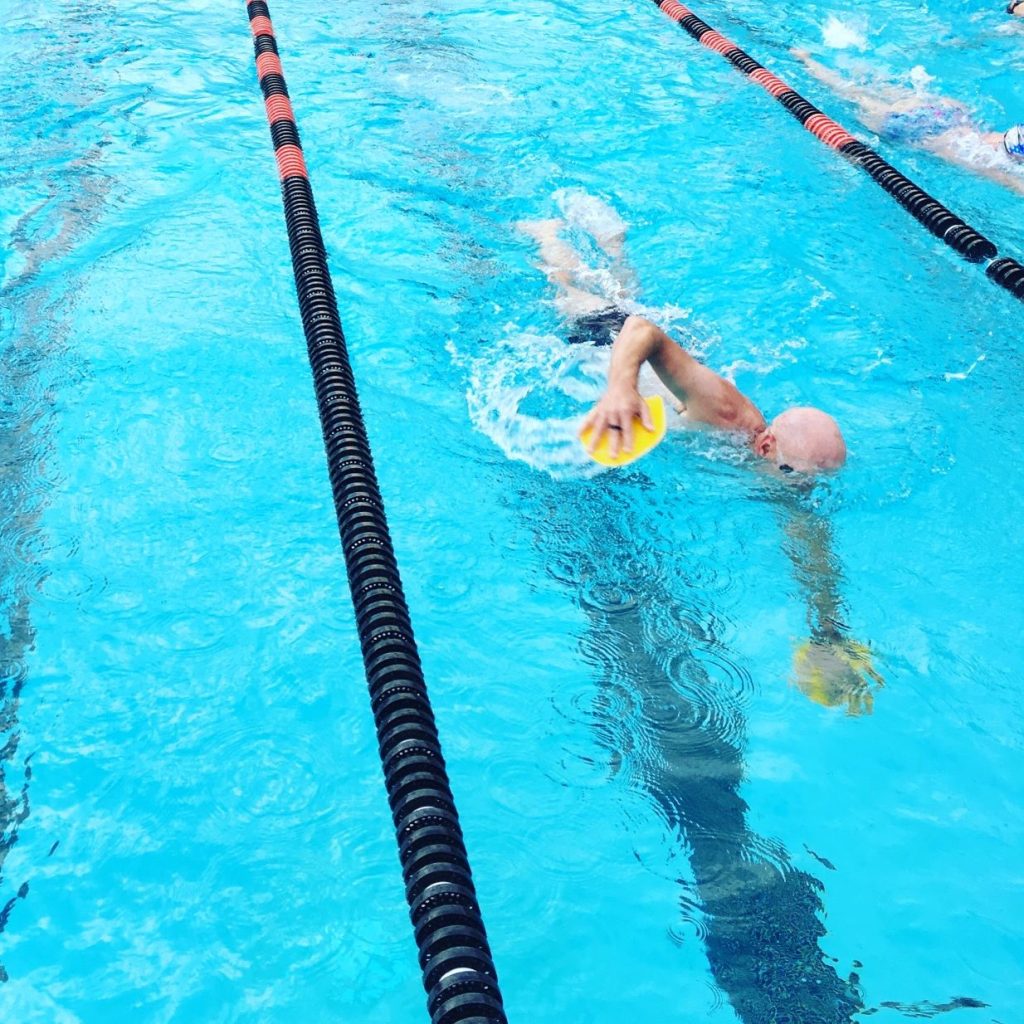Lap swimming is one of the most effective and low-impact forms of exercise available. It involves swimming continuous lengths of a pool using consistent strokes and turns. This rhythmic activity builds endurance, strengthens muscles, and improves cardiovascular health.
Unlike high-impact workouts, lap swimming puts minimal stress on joints. This makes it ideal for people with arthritis, injuries, or mobility concerns. At the same time, it burns calories efficiently—often more than running or cycling at the same intensity.
Each stroke engages multiple muscle groups. Freestyle works the shoulders, back, and core. Breaststroke targets the chest, thighs, and glutes. Butterfly builds upper-body power. Backstroke supports posture and balance.
Moreover, lap swimming enhances lung capacity. Controlled breathing patterns train the respiratory system to function more efficiently. Over time, this leads to better stamina and reduced fatigue.
It also benefits mental health. The repetitive motion creates a meditative rhythm. Many swimmers report lower stress levels and improved focus after a session.
Pools are widely accessible. Most gyms, community centers, and schools offer lanes for lap swimming. Some facilities even provide coached sessions or training plans.
Therefore, whether you’re a beginner or an experienced athlete, lap swimming delivers measurable results across physical, emotional, and cognitive domains.
 Benefits for Physical Fitness
Benefits for Physical Fitness
Lap swimming builds full-body strength without weights. Water provides natural resistance in every direction. Muscles work harder to move through it.
Cardiovascular health improves quickly. Heart rate increases steadily during laps. Blood flow boosts oxygen delivery to tissues. This reduces risks of heart disease and high blood pressure.
Flexibility gains come from long, flowing movements. Reaching forward and rotating arms stretch the spine and shoulders. Kicking motions extend the hips and hamstrings.
Joint stability strengthens over time. The buoyancy of water supports body weight. This allows safe movement while still building muscle control.
Balance and coordination improve too. Maintaining streamline form requires body awareness. Turning at the wall demands timing and precision.
Calorie burn remains high. A 150-pound person can burn over 400 calories in 30 minutes. Faster strokes like freestyle or butterfly increase that total.
Bone density may also benefit. While not weight-bearing like running, the resistance in water stimulates bone adaptation.
All these advantages make lap swimming a top-tier workout. It’s efficient, adaptable, and sustainable for long-term fitness.
How to Start a Lap Swimming Routine
Starting a lap swimming routine begins with preparation. First, choose a suitable pool. Look for one with dedicated lap lanes and clear water.
Get proper gear. A well-fitted swimsuit reduces drag. Goggles protect your eyes and improve visibility. A swim cap keeps hair out of your face.
Begin with short sessions. Try two to three times per week for 15–20 minutes. Focus on consistency rather than speed.
Warm up before each swim. Swim one or two easy laps to loosen muscles. Use slow strokes and deep breaths.
Set realistic goals. Aim to complete a certain number of laps. Gradually increase distance or reduce rest time between sets.
Use intervals if you want structure. For example, swim four 50-meter laps with 30 seconds of rest. This builds endurance gradually.
Practice flip turns later. Beginners should start with open turns. Push off the wall with both hands. Glide into the next lap.
Track progress in a journal. Note how many laps you complete and how you feel. Seeing improvement motivates continued effort.
With patience and regular practice, lap swimming becomes a natural part of your fitness lifestyle.
 Best Strokes
Best Strokes
Several strokes work well for lap swimming. Freestyle (front crawl) is the fastest and most popular. It uses alternating arm pulls and flutter kicks. Breathing happens to the side every few strokes.
Breaststroke moves slower but offers excellent joint support. Arms pull in a circular motion. Legs perform a frog kick. This stroke is easier on the shoulders.
Backstroke lets you breathe freely. You swim on your back with alternating arm movements. Flutter kicks keep momentum. It helps correct rounded shoulders.
Butterfly is the most intense. It requires strong core and upper-body strength. Both arms move together in a sweeping motion. Dolphin kicks drive propulsion.
Choose based on ability and goals. Freestyle builds speed and endurance. Breaststroke suits recovery days. Backstroke adds variety.
Mixing strokes prevents overuse injuries. Rotate them weekly. This balances muscle development and keeps workouts interesting.
Some swimmers use hybrid sets. For example, swim freestyle for two laps, then breaststroke for one. This builds versatility.
Learning proper technique matters. Watch videos or take lessons. Small adjustments improve efficiency and reduce strain.
Mastering multiple strokes enhances the value of lap swimming.
Tips for Beginners
New swimmers should focus on comfort first. Enter the water slowly. Get used to the temperature and feel of floating.
Breathe deliberately. Inhale above water. Exhale slowly underwater. Avoid holding your breath—it causes tension.
Stay in the shallow end initially. Practice kicking with a kickboard. This builds leg strength and confidence.
Keep your body horizontal. A streamlined position reduces drag. Point your toes and keep your head aligned.
Don’t rush. Take breaks when needed. Walk along the bottom or hold the wall to rest.
Count your strokes. This helps track laps and develop rhythm. Use a waterproof counter if helpful.
Avoid swallowing water. Tighten your lips when breathing. Turn your head just enough to clear the surface.
Ask lifeguards or instructors for help. Most pools welcome questions. They can suggest drills or correct form.
Celebrate small wins. Completing your first five laps is a big step. Progress takes time.
With persistence, lap swimming becomes enjoyable and rewarding.
Common Mistakes to Avoid
Many beginners make avoidable errors. One common mistake is lifting the head too high. This disrupts alignment and slows movement. Keep your neck neutral.
Overkicking wastes energy. Small, fast kicks create more drag. Use smooth, controlled motions instead.
Holding your breath causes fatigue. Exhale steadily underwater. Inhale quickly when turning your head.
Poor hand entry damages shoulders. Slap the water with flat palms. Instead, enter fingertips first. This reduces strain.
Swimming too fast early on leads to burnout. Build endurance gradually. Focus on form before speed.
Ignoring rest intervals harms performance. Take short breaks between sets. This allows recovery and better quality later.
Skipping warm-ups increases injury risk. Cold muscles react poorly to sudden effort. Always start slow.
Using incorrect gear slows progress. Baggy clothes create drag. Old goggles leak. Replace worn equipment.
Finally, comparing yourself to others causes discouragement. Everyone progresses at their own pace. Stay focused on personal growth.
Avoiding these mistakes improves safety and results in lap swimming.
 Equipment Needed
Equipment Needed
Having the right tools makes lap swimming more effective. A snug swimsuit is essential. Competitive suits reduce resistance. Recreational ones offer comfort.
Goggles prevent eye irritation. Choose anti-fog models with adjustable straps. Clear or tinted lenses suit different lighting.
A swim cap keeps hair dry and reduces drag. Silicone caps last longer. Fabric ones are gentler on hair.
Kickboards help isolate leg workouts. Pull buoys float the legs. These tools build strength during drills.
Fins add resistance and improve ankle flexibility. Short-blade fins are best for technique work.
Snorkels allow uninterrupted breathing. Swimmers use them to focus on stroke mechanics.
Waterproof watches track time and laps. Some record heart rate and stroke count.
Mesh bags store wet gear. Ventilation prevents mildew and odors.
Investing in quality equipment supports long-term success in lap swimming.
 Where to Find Lap Swimming Opportunities
Where to Find Lap Swimming Opportunities
Lap swimming is available in many locations. Public recreation centers often have indoor pools. They offer open swim times and reserved lanes.
YMCA and JCC facilities provide affordable access. Memberships include swim hours and classes.
Colleges and universities open pools to the public. Check schedules online. Some require day passes.
Health clubs like LA Fitness or Planet Fitness feature lap lanes. Verify availability before joining.
Outdoor pools operate seasonally. Municipal parks departments run them in summer. Early morning hours are usually less crowded.
Masters swim programs offer coached training. These groups meet regularly. They cater to adults of all levels.
Hotels sometimes allow guest use. Extended stays can include daily swims.
Travelers can search for aquatic centers in new cities. Apps and websites list nearby pools.
With planning, finding a place for lap swimming is easy and convenient.
Frequently Asked Questions
How many laps equal a mile?
In a 25-yard pool, 70.4 lengths make a mile. That’s 35 full laps. Adjust for pool size.
Can I do lap swimming every day?
Yes. Low impact allows daily use. Include rest or easy days to prevent overtraining.
Is lap swimming good for weight loss?
Absolutely. It burns calories and builds lean muscle. Combine with nutrition for best results.
Do I need to know all strokes?
No. Start with freestyle. Learn others as you gain confidence.
How long should a session last?
Beginners: 15–20 minutes. Intermediate: 30–45 minutes. Advanced: 60+ minutes.
Can older adults do lap swimming?
Yes. It’s joint-friendly and improves balance. Many seniors swim regularly.
What if I can’t swim well?
Take lessons first. Adult swim classes teach basics safely. Practice in shallow areas.
Are there rules for lap lanes?
Yes. Swim on the right. Pass only on the left. Flip turns depend on facility policy.
 Final Thoughts
Final Thoughts
Lap swimming stands out as a balanced, sustainable way to stay healthy. It combines cardio, strength, and mental wellness in one seamless activity.
From injury recovery to peak performance, it adapts to every life stage. Its low-impact nature protects joints while delivering powerful results.
More importantly, it teaches discipline and mindfulness. The rhythm of strokes and breath creates a moving meditation.
Communities form around pools. Swimmers share tips, encouragement, and goals. This social aspect enhances motivation.
Equipment is simple. Facilities are widespread. No other workout offers this mix of accessibility and effectiveness.
Whether you swim for fitness, therapy, or peace of mind, lap swimming meets your needs.
So if you’re looking for a lifelong exercise, give it a try. Dive in. Feel the difference. Make lap swimming part of your journey.